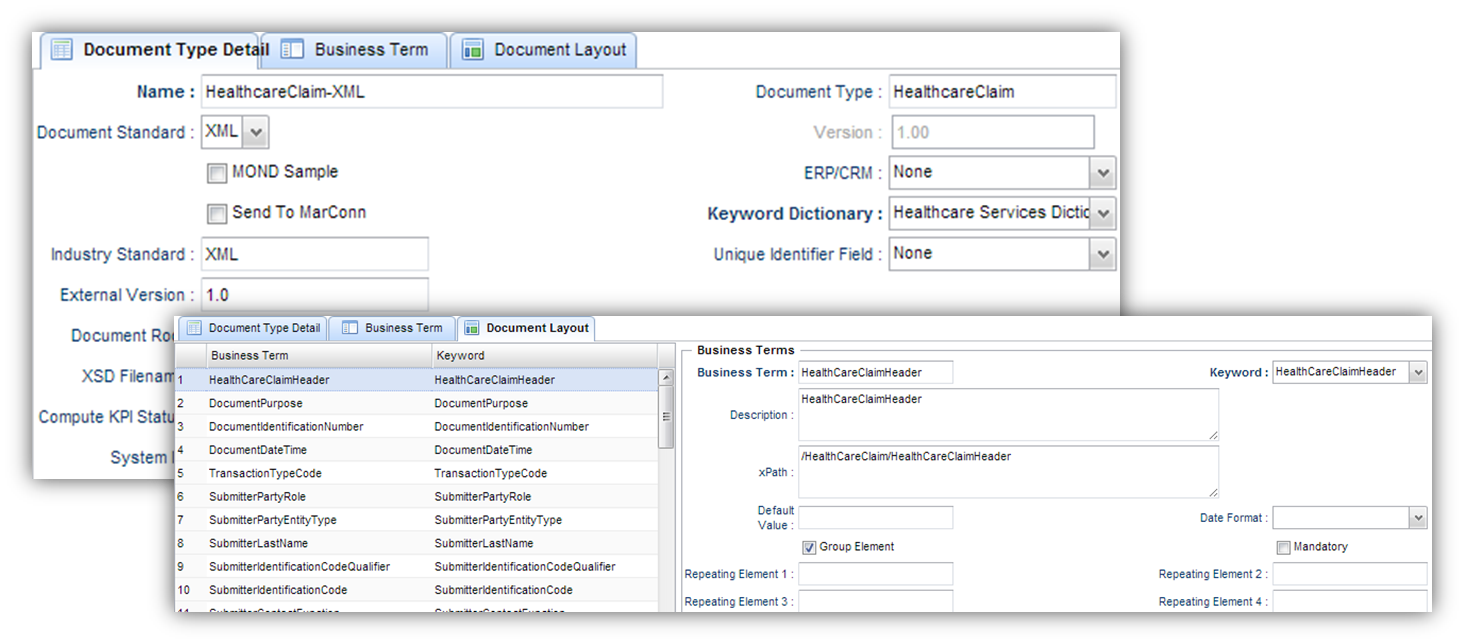

Healthcare industry is using Electronic Document Interchange(EDI) for several years now. The adoption of EDI in Healthcare has brought in significant benefits in reducing the administrative costs of Health care transaction processing and has shortened the transaction processing cycle times resulting in faster processing of claims helping both the patients and the medical service providers. However, the adoption is fraught with several challenges preventing the organizations to enjoy the large scale benefits promised by EDI. On the one hand the industry has several participants who are relatively small, have limited IT resources and suffer with limited financial strength preventing from adopting the EDI. On the other hand the industry is challenged to find the right solutions of EDI, which can integrate and supplement their existing systems and applications. The organizations who have already adopted EDI, are also facing challenges in complying with the newer versions, ASC X12 005010. The US Healthcare department is imposing adoption of EDI through HIPAA while the organizations are facing several challenges as aforesaid.
But, not anymore! There is a reliable cure to these ailments. I shall show how MOND simplifies the EDI integration and enables organizations to comply with HIPAA. MOND, the cloud based integration platform, provides integration solutions to various industries out of which Healthcare industry is one. As part of the Health care industry solution, MOND has a semantic repository of Healthcare dictionary comprising of an exhaustive list of business terms used in the Health care industry and the commonly exchanged EDI transaction sets by the participants. Any organization in the Healthcare industry who wish to adopt EDI, can avail the MOND platform for exchanging EDI documents with the various service providers in the Healthcare industry. An organization using MOND for the first time in order to exchange EDI documents with other service providers, has to follow 5 simple steps. I have explained this by taking an example of a Hospital which has Healthcare claim information in the form of an XML document and is in need to transform the XML document into an EDI 837 Healthcare Claim message and transmit the same to an insurance service provider. The steps involved are:
The first activity is to define Companies for the Hospital and the Insurance Service Provider and associate the Insurance Service Provider as Trading Partner of the Hospital Company. The Company definition screen snapshot is given below:


You may notice that the AS2 identifiers of both these organizations are configured in the respective Company definition screens. The Insurance Service Provider Company is associated to the Hospital Company by using a simple drag and drop feature.Define Document Types The next activity is to define the Document Type for the custom XML document of the Hospital and the Document Type for the X12 837 document to be sent to the Insurance Service Provider. While defining the Document Type, we also define the document layout. The document layout contains the structure of the document and the business term associated to each field / element in the document layout. The unique power of MOND lies in the fact that MOND can automatically discover the structure of the EDI document if we upload a sample of the EDI document. This accelerates Document Type definition. A snapshot of the Document Type definition screen snapshot is given below:


This is an activity to capture the information for mapping the ISA control segments in the EDI document transmitted to the Insurance Service Provider. A snapshot of the Company Partner Profile screen is given below:

The Channel definition is the activity where we capture the details required to transmit the document, like the Host name, the Port name, the sending and receiving organization's Certificate, etc. In this example, an FTP channel has to be defined to receive the Healthcare Claim message from the Hospital and an AS2 channel has to be defined to transmit the EDI 837 message to the Insurance Service Provider. Snapshots of the Channel definition screen are given below:


The Healthcare Claim document in the form of an XML has to be mapped to EDI X12 837 document and the EDI document has to be transmitted to the Insurance Service Provider. A snapshot of the sample mapping defined for creating the EDI document and transmitting it to the Insurance Service Provider is given below:

You may notice from the map that it contains steps to fetch the XML document from the FTP server, business logic to map the various business terms of the target document from the source document, steps to send the target document to the recipient. (This map is just a sample and shows mapping of few fields, although in regular map, there will be exception handling steps and the FTP read and AS2 send functions will be implemented in separate maps.) It does not contain any reference to the source or the target document structure. This is enabled by the Semantic mapping concept of MOND which provides the following advantages:
Just by following the above 5 simple steps, the Hospital can start sending Healthcare Claims to Insurance Service Provider and become HIPAA compliant to that extent. Transmitting the Healthcare Claim messages to any additional Insurance Service Provider is even easier in as much as defining a Company for the new Insurance Service Provider and defining a Channel thereon to capture the transmission protocol details. There is no need to define a new mapping even. Addition of newer partners will take few days instead of months.Admirable, is it not? Now, if you have started to guess the costs associated with acquiring such a capability, WAIT! All these comes at a reasonable cost because MOND is a cloud based integration platform offering Integration as a Service and moving over to MOND Cloud avoids all the costs of infrastructure, middleware licence cost, integration Application development / licencing cost and the corresponding maintenance overheads. Thus, MOND provides all of the following necessary ingredients to eliminate the ailments of the EDI adoption in Healthcare industry: